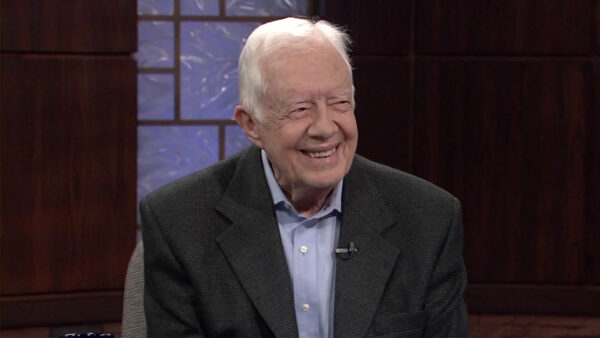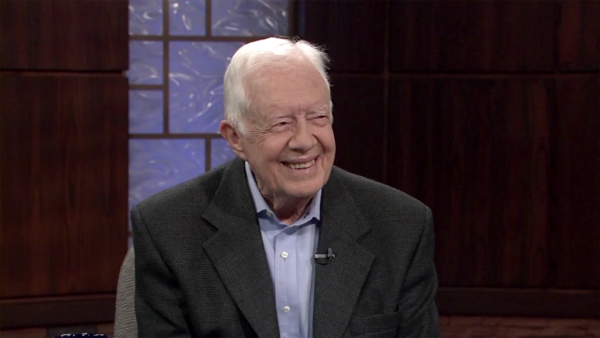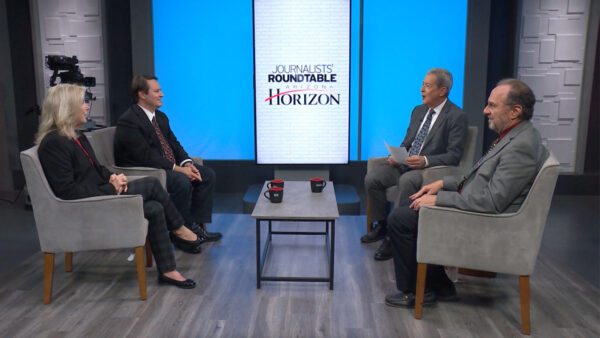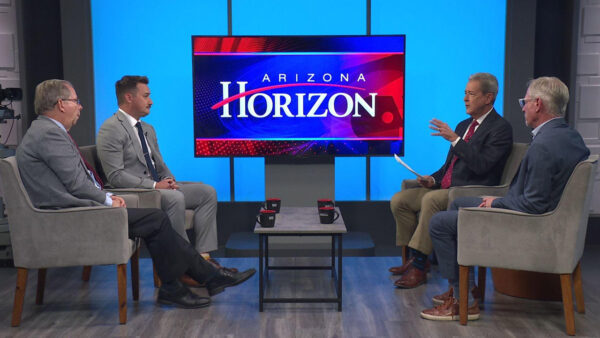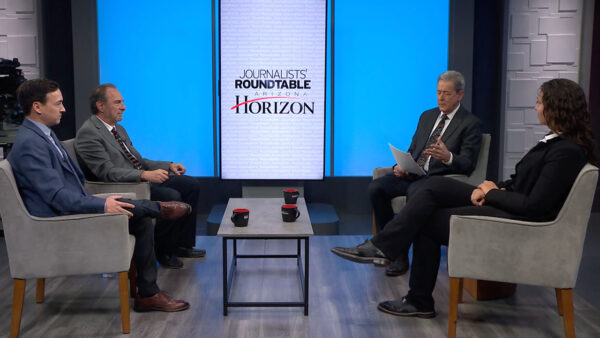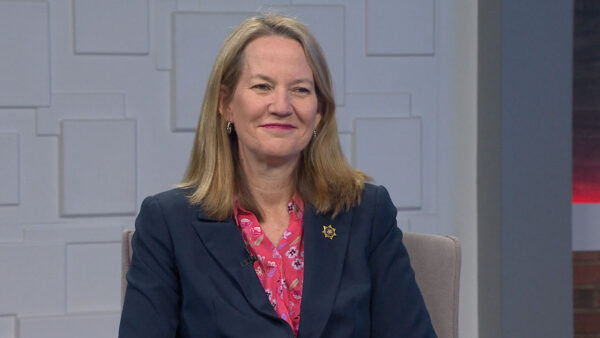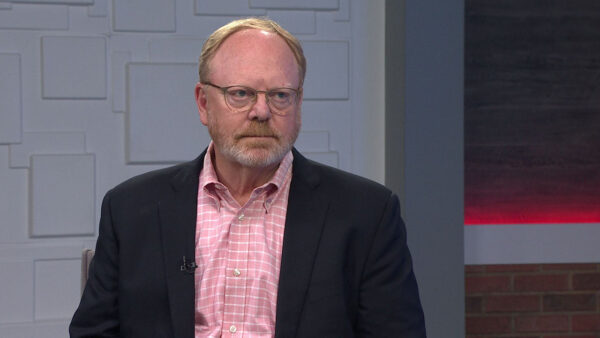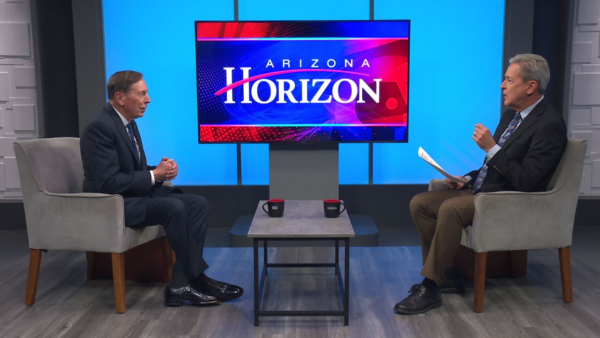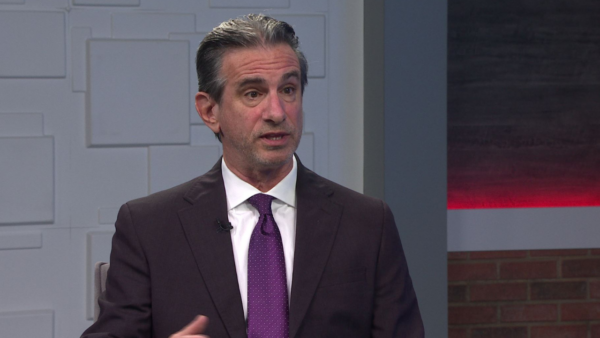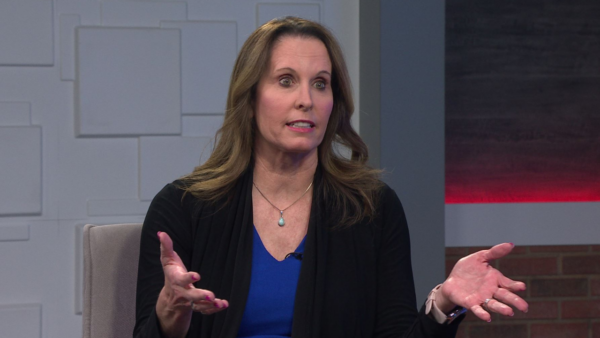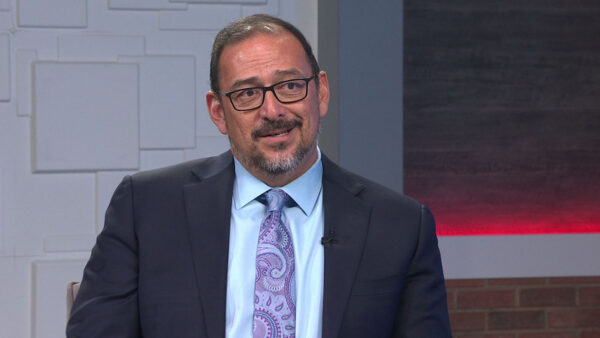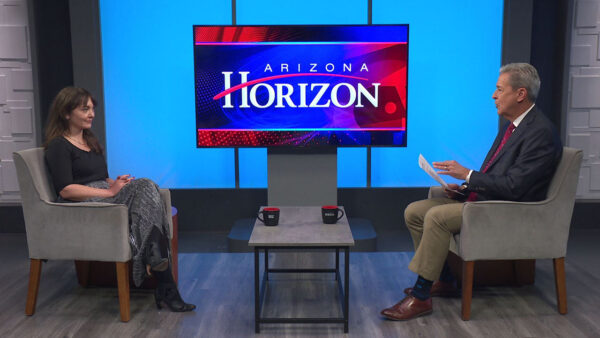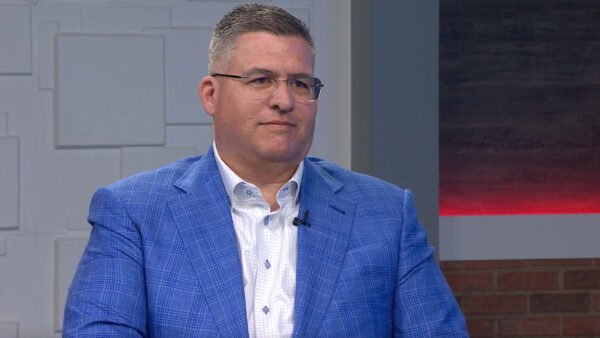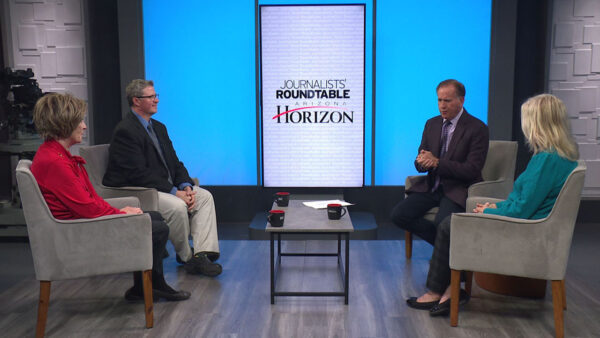The City of Phoenix has awarded a contract to Tessera Solar for a new 250-megawatt solar power plant to be located at the city’s landfill in Buckeye. It will be able to provide power to 50,000 homes. Phoenix Mayor Phil Gordon and a representative of Tessera Solar will discuss the project.
Ted Simons: Good evening. Welcome to "Horizon." I'm Ted Simons. The city of Phoenix awarded a contract last week to Tessera-Solar of Houston to build a solar power plant next to the city's only active landfill. It's located on land the city owns in Buckeye. I'll talk with the Phoenix city councilman and a representative of Tessera-Solar but first, Mike Sauceda tells us more about the facility.
Mike Sauceda: Right now, this is Phoenix's only active landfill. In two years, it'll be an electric power plant putting out 250 megawatts of power, enough for 50,000 homes. The project will be built by Tessera-Solar. We use a concentrated solar thermal system, and a system that converts methane gas from the landfill to energy. The thermal system will focus the sun's rays on an engine which powers a generator to produce electricity. Project will create a billion dollars in investment and 300 construction jobs and 60 permanent jobs. Phoenix council woman Peggy Neely praised the project.
Peggy Neely: Today is a major milestone as the mayor said. We were given these challenges by Mayor Phil Gordon just awhile back saying we want to be the greenest city in the United States. I think yesterday moved us to that point. With the joint approval of the contract with Tessera-Solar, we've launched a chapter in our history that will transform our economy, our communities and our ability to sustain healthy growth for generations to come, not only here in Phoenix but across this region and with our partner in Buckeye. These days, the economy demands that we be creative in every decision we make on this project. Certainly being creative for the economic benefits, bringing a large-scale solar project, a utility scale project that's going to generate 250 mill watts, enough power for 50,000 homes annually with minimal water usage.
Ted Simons: And here now to discuss the new solar power plant is Phoenix City Councilman Claude Maddox and Peter Wilt, senior director for development for Tessera-Solar. Good to have you both on Horizon thanks for joining us. Why the contract to Tessera-Solar. What do they offer?
Claude Maddox: Tessera, basically we felt they were the ones that were most capable of doing the job. It is not -- we had several great companies that put in for the RFP but ultimately Tessera is the one that established that they can build and operate a utility-scale solar facility that was the deciding factor.
Ted Simons: Why this portion of city-owned land in buckeye?
Claude Maddox: We've got lots of land there. And we because of our reduction in our waste flow, um, taking out the recycling, taking out green waste and things of that effect, we've expanded the life of this landfill for many, many years. And with that being the case we have a lot of land to generate revenue or to use for a project like this that's why we decided to go and move it out there. Plus it's in the utility corridor. The power lines from Palo Verde are right there so it's easy access to connect in.
Ted Simons: For a project like this, one of the first concerns especially out there in the desert is water and energy production and water very closely related. How much water is this going to use?
Peter Wilt: Very little. Quite frankly, we use no water in the production of energy itself. We do use water to wash the mirrors. The mirrors tend to get dirty over time as dust and other materials settle on the mirrors but there's no water used in the production of energy itself. The water that we use essentially to wash the mirrors and potable water for the folks that work on the site. Has an approximation for 250 megawatts. We may use on an annual basis 500 feet of water. That's the amount of water that 5-10 residential houses may use in a year. It's a low use of water.
Ted Simons: And councilman Maddox mentioned the utility corridor and how convenient that was, talk about transmission lines where the power will go and who could possibly be buying this power?
Peter Wilt: We're located two miles from a transmission corridor. We'll have to cross SR-85, which is about a two-mile construction project. Then there's three miles up to the nearest substation. That substation is owned by four large utilities. SRP is the operator of that substation. We'll have to file to interconnect there. Potential customers will include Arizona utilities, obviously APS, SRP, Tucson Electric, possibly the California Utilities but it's a great project and a very good connection point for this project.
Ted Simons: If the potential customers come through, will the city of Phoenix get some of that revenue?
Claude Maddox: Yes, there's a profit-sharing aspect to that I don't know the specific details to that I'm sure there's a threshold that Tessera is going to want to meet before we start participating. Truthfully, all our participation is at this point is land. We have the land to provide. Tessera will be building it all the capital improvements will be at their expense and then ultimately it's their responsibility to sell those contracts and generate that power. Then we participate in the profits.
Ted Simons: So when critics say the city of Phoenix has financial difficulties right now of a serious nature, what are they doing going to building power plants out in the desert in Buckeye. You're saying the city isn't on the hook for much except for the land?
Claude Maddox: No, not at all. We're on the hook for the land. Right now, it's being farmed. We're having a little bit of revenue generated off; we anticipate this'll be far greater for us.
Ted Simons: How expensive is this project? What kind of costs are you seeing?
Peter Wilt: We're looking around $750 million for 250 megawatts. Keep in mind it's not only a solar plant but landfill to energy plant. Right now there's methane coming off the existing landfill that's being burned into the atmosphere. That's a very low use for this particular energy. We will install equipment that will convert that natural gas that methane to electricity just like the solar plant.
Ted Simons: Interesting, so that is being used also your technology I know it's called Sun Catcher Technology. Explain what that means?
Peter Wilt: Sun Catcher Technology is, it's a blend of old and new technology. The sterling engine which is the power conversion unit which sits at the end of the power conversion module, that technology, the sterling engine, has been around for about 200 years. We're just bringing it to use in terms of converting solar energy into electrical energy. The sun catcher itself looks like a very large catcher's mitt. It's about 38 feet across. It concentrates the sun's energy on the engine. The engine then converts that energy into electricity.
Ted Simons: Is there a way to store energy if we have like we've had this winter a little El Niño action and a few cloudy days in a row?
Peter Wilt: One of the biggest problems of solar energy, any kind of electricity for that matter other than storing in batteries, it's a very difficult product to store. So with this particular technology, there won't be any storage.
Ted Simon: Ok. Concern there but not a major concern?
Peter Wilt: Well, there are other ways of providing electricity during the off-peak hours. There are other ways of providing that other than solar. The good thing about solar particularly in Arizona is during the peak hours of the day when the electricity is needed most, that's when the solar plant will operate at its highest efficiency factor.
Claude Maddox: Well --
Ted Simons: Go ahead, please.
Claude Maddox: I'd like to go back to the economic comment that we were discussing a few minutes ago. There's a lot more than just the power generation that will help us from an economic perspective. You're right; we're in an economic difficult time for the city. We're talking about 300 construction jobs that will come out of this one of the things that we've requested is that they focus on the local labor force. We're talking about 60 permanent jobs. This is a good opportunity for us also to attract more business into the city of Phoenix that would support this. So manufacturing, tower, automotive is a manufacturing facility that makes the motors or the engines that operate these sun catchers. They're already looking to potentially locate in Phoenix which will be more jobs. There's a lot of economic value here not just in the generation or the power and the profit sharing but also in the economic development side of it.
Ted Simons: Along with the multiplier effect, I would imagine if Tessera is if project goes as planned and all things work out well that Tessera will look at other activity in Arizona?
Peter Wilt: Absolutely. And to highlight on Mr. Maddox comment tower automotive for example is looking at four to six hundred thousand square feet to locate in the valley. They're looking at something on the order of 250 jobs in terms of manufacturing jobs. And possibly as much as $150 million of investment. There's a multiplier effect beyond the project itself.
Ted Simons: Time line, what are we looking for in terms of this breaking ground and starting to get the power going?
Claude Maddox: I'll have to defer to Peter on that one. He's very knowledgeable.
Peter Wilt: We're very aggressive. We got a lot of permits to get we got to market to power we got to go through the Arizona corporation commission in terms of permitting and other authorizations. We hope to be C.O.D. by the end of 2012 or shortly thereafter. We hope to break ground sometime during the early part of 2012.
Ted Simons: All right, very good. Gentlemen, great conversation. Thank you very much for joining us.
Claude Maddox: Ted, thank you.
Peter Wilt: Thank you, Ted.
Claude Maddox:Phoenix City Councilman Claude Maddox;Peter Wilt:Tessera-Solar;
